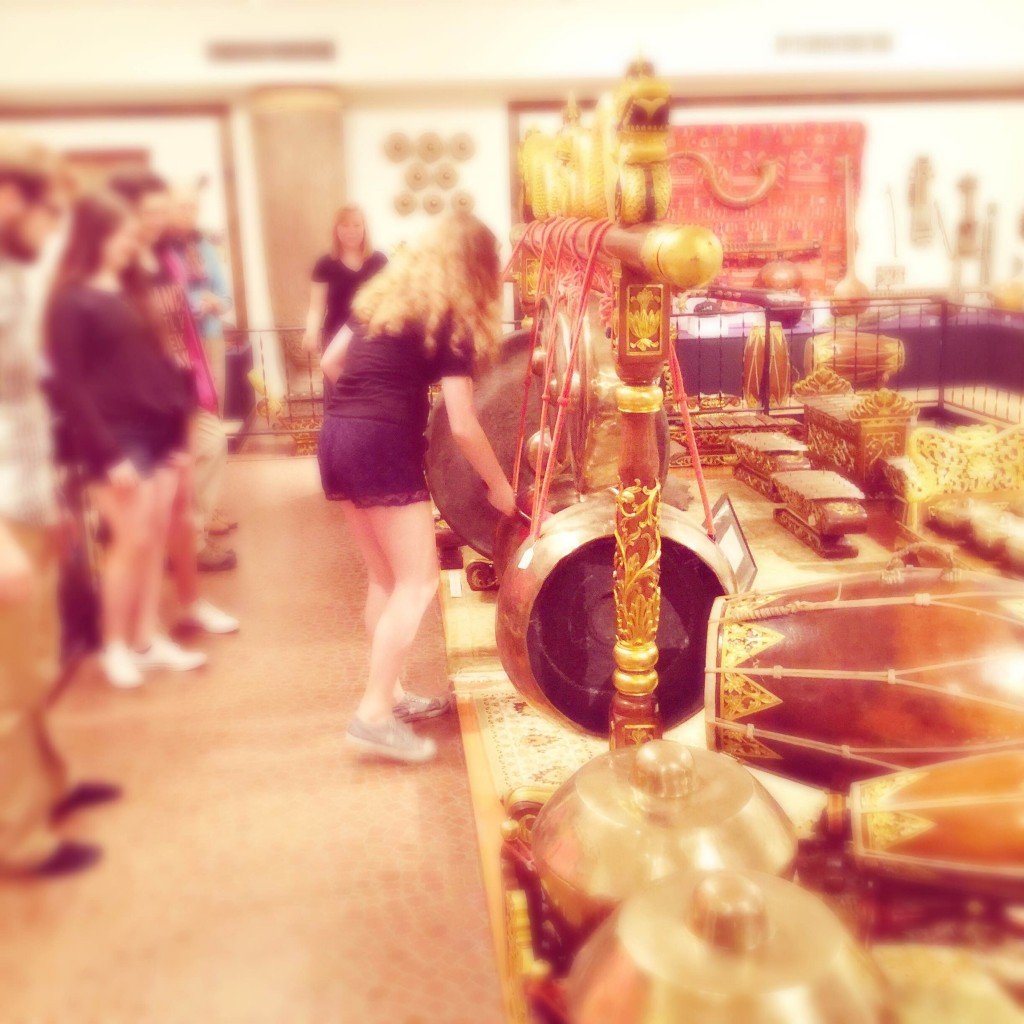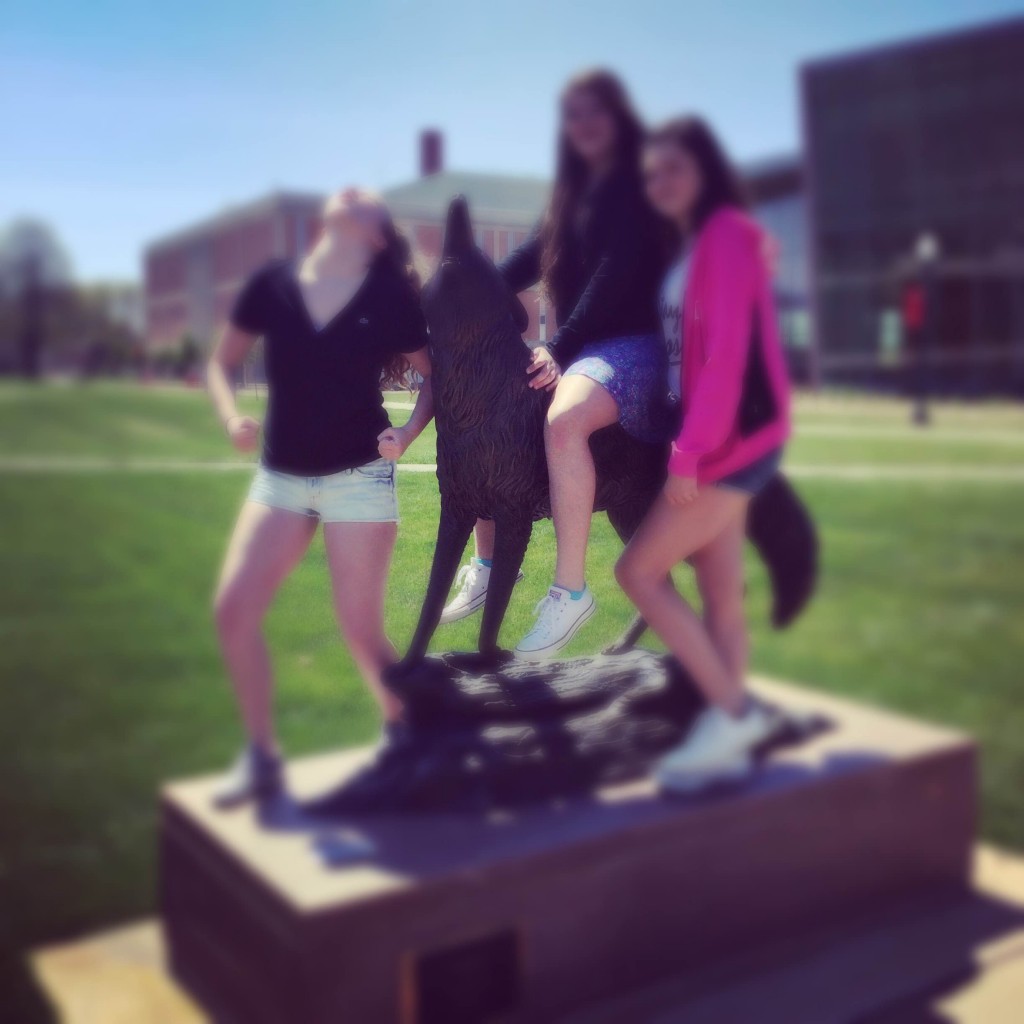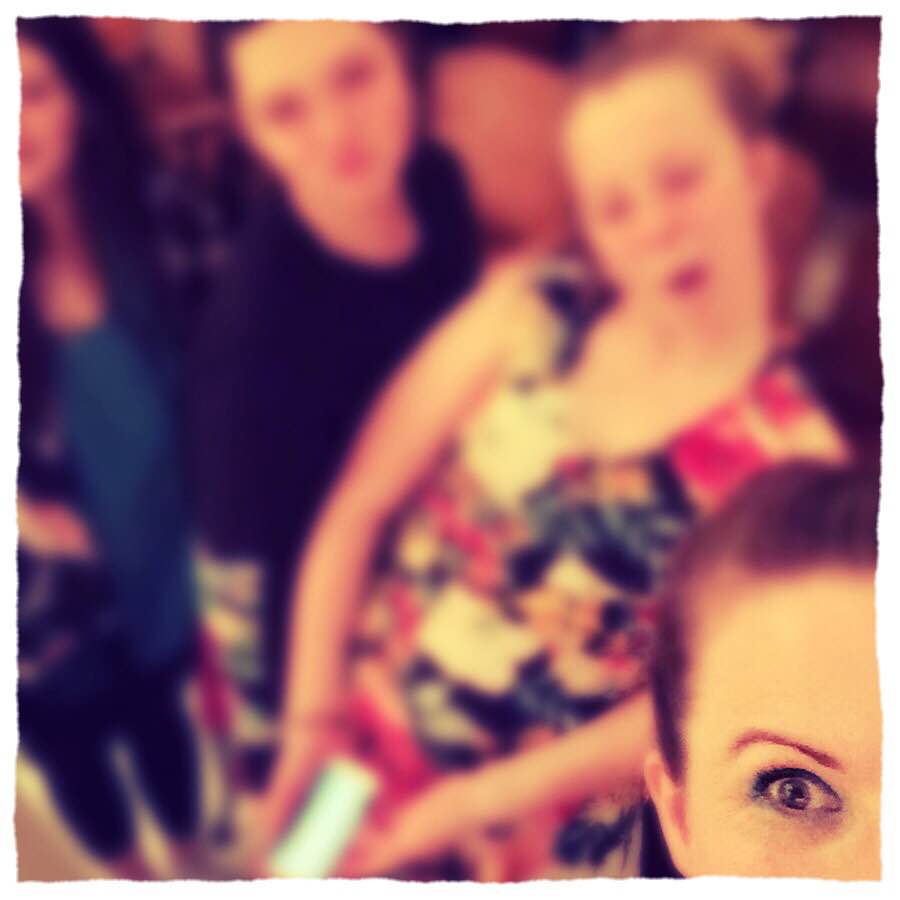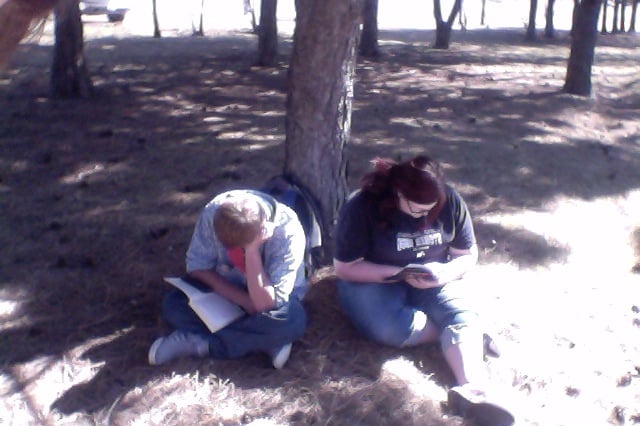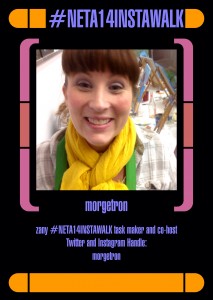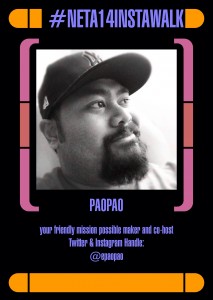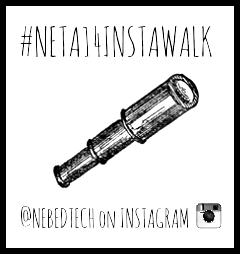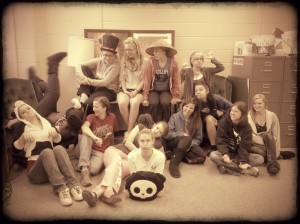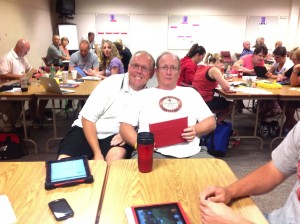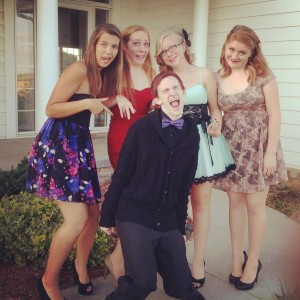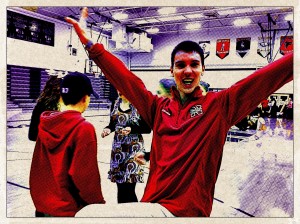*This post was inspired by this week’s #slowchated.
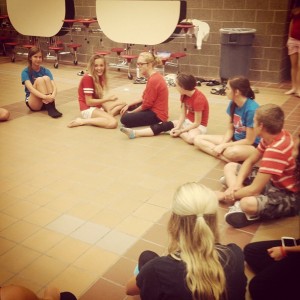
Why school? Because: Relationships. Relationships are why education is.
It is for the above-stated reason that I spend so much time at the beginning of a semester (even for year-long classes at the beginning of second semester) front-loading rapport-building activities. As far as I’m concerned, content and skill development can wait because without a student-teacher rapport, learning will suffer. I have a friend who lives by the mantra: “They don’t care how much you know until they know how much you care.” If you invest this time connecting to students, you don’t even have to think about classroom management later on. When you earn your students’ respect, you set the stage for smooth production.
In my current position, I teach English and drama. Some of the same games we use to build performance skills in drama class are also brilliant community-enhancers and can be used in any classroom for such a purpose.
Why do drama games work for building classroom community? They’re fun. They’re a little silly. They give license for people of all ages to play together in a low-risk situation that has no other goal than to strengthen the relationships in the room. (SRSLY, doods. Everyone wins. Every. Single. Time.)
In this post, I’ll discuss drama games that have worked well in non-drama classes for the purpose of relationship-building. Some of these games came from books that I have acquired over the years and some came from workshops that I’ve attended. I will give credit whenever memory serves me well enough to do so. Many of these games are much like oral literature in that they are passed by word-of-mouth over time and tweaked by each new recipient, so the way I present them are versions of the way I learned them, but I’m certain they have changed from the way I was taught in a subtle or maybe even sometimes drastic way, just as I’m sure that the way I was taught was personalized by the teachers in some way, shape, or form as well.
☆☆☆☆☆☆☆☆☆☆☆☆☆☆☆☆☆☆☆☆☆☆☆☆☆☆☆☆☆☆☆☆☆☆☆☆☆☆☆☆☆☆☆☆☆☆☆☆☆☆☆☆☆☆☆☆☆☆☆☆☆☆☆☆☆☆☆☆☆☆☆☆☆☆☆☆☆☆☆☆☆☆☆☆☆☆☆☆☆☆☆☆☆☆☆☆☆☆
THE GAMES
☆☆☆ —> THE MAGIC SUBSTANCE

Photo Credit: Sean McGrath via Compfight
Source: A Drama Workshop (but I can’t remember which one–sorry!)
Premise: Suspend your disbelief. Sit in a circle. One person (the starter) in the circle has a magical substance. It can take any form or shape. The starter should play with the substance for a while, changing it’s weight, size, texture a few times before passing the substance to the person sitting next to him/her. (S/he may choose to the left or to the right.) That person must receive the magical substance as it is delivered to him or her, but then s/he must change it somehow before passing it to the next person. Each person, in turn, must receive the substance as is and change it somehow before passing it, until it comes back to the starter.
Note: You may not change the substance into a thing. For example, you can’t change it into a cell phone or a gun. It must just be an indefinable, but constantly-morphing, magical substance at all times.
☆☆☆ —> DEFENDER

 Photo Credit: Ol.v!er [H2vPk] via Compfight
Photo Credit: Ol.v!er [H2vPk] via Compfight
Source: Theater for Community, Conflict and Dialogue: The Hope is Vital Training Manual by Michael Rohd (with a foreword from one of my all-time favorite educators, Dr. Doug Paterson from University of Nebraska at Omaha)
Premise: Move around the space freely. While in motion, everyone must SILENTLY and WITHOUT OBVIOUS FANFARE choose a Defender and an Enemy. In the time remaining (5 minutes or less) continue moving (still silently) around the room, but the object is to always keep your Defender between yourself and your Enemy.
Note: In some cases, individuals will select a Defender who has selected him/her as an Enemy. This only adds to the complexity and challenge of the game. Encourage students to choose others who they would not normally choose. (For example, someone may choose their best friend as their “enemy” for this game, or someone with whom they’ve rarely talked as a defender.)
☆☆☆ –> BLOB TAG
Source: I don’t remember. (EEK!)
Premise: One player is The Blob. (In traditional tag, this person would be called “IT.”) Everyone else must try to stay away from The Blob. The Blob must try to tag everyone else. Once The Blob tags someone else, that someone else, hooks arms with The (original) Blob and becomes a part of The Blob him/herself. Each person who is subsequently tagged becomes part of The Blob until EVERYONE is part of The Blob.
Note: You will want to set boundaries in the space, especially if you are in a large one. A stage, a commons area, a gym, or an outdoor space works well for this.
BONUS: Blog Tag + Costumes (This was taken during Homecoming Week on Cartoon Day.)
☆☆☆ —> BUNNY
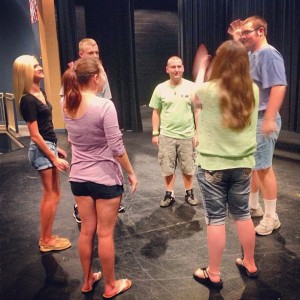
Source: A Church Youth Leader, somewhere in Minnesota …
Premise: Form a circle. Choose someone to be the Starter. The Starter places his/her two thumbs on the side of his/her head with the rest of his/her finger stretched outward. (Think of the nanny-nanny-boo-boo gesture.) S/he wiggles his/her hands and says “Bunny, bunny, bunny, bunny, bunny, bunny, bunny.” On the 7th(ish) “bunny” s/he takes his/her hands off of his/her head and puts his/her palms together and “sends” or “zaps” the bunny to someone else in the circle. Whomever the Starter points to then receives the bunny, by placing his/her hands in the aforementioned “bunny” stance AND the person to the receiver’s right, places his/her right hand on the right side of his/her head and the person to the left places his/her left hand on the left side of his/her head and all three people chime in with “Bunny X 7ish” until the middle person zaps the bunny across the circle again. If any of the three receivers do not react quickly enough, or make the wrong gesture, that person is OUT and steps out of the circle. As more and more people get OUT, the circle tightens until it gets down to three. The last three will be the quickest paced portion of the game because ALL three people will be involved in ALL of the bunnies. When it gets down to TWO, you must have a VEGETABLE DUEL. (A vegetable duel can be used to settle all sorts of classroom scores, by the way.) For the vegetable duel the last two people must stand back to back, until the duel master spurs them to take four swift paces away from one another. Then the duel master must call out the name of a vegetable. Upon hearing the name of the vegetable both duelers must turn and do an impersonation of the chosen vegetable. Whoever makes the best impersonation of said vegetable (as determined by duel master or by clapping vote–house rules) WINS.
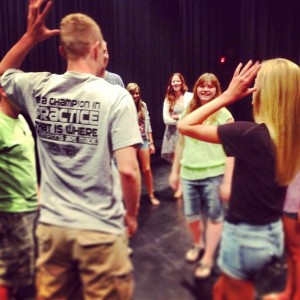
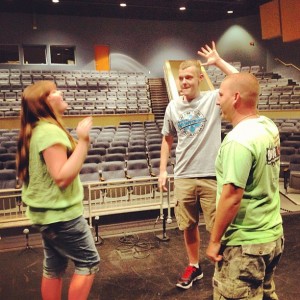
☆☆☆ —> CIRCLE DASH

Photo Credit: Kevin Dooley via Compfight
Source: Theater for Community, Conflict and Dialogue: The Hope is Vital Training Manual by Michael Rohd
Premise: Form a circle with one volunteer in the middle. The object of the game is to get out and stay out of the middle, but it’s also to challenge yourself with taking a (safe) risk with the help of another student. When the person in the middle isn’t looking, make eye contact with someone at least one person away from you. Make eye contact with that student and give a slight nod, raise your eyebrow, or make some sort of tiny gesture to indicate that you want to trade places with that person. Once you and the other person have silently agreed to trade spots, make a run for it. When you are in transit, the person in the middle will try to take one of your spots. If s/he does, then you will take his/her spot in the middle and try to take someone else’s spot, when s/he trades with another student.
Note: This is the only game during which I have been positively FLATTENED by a student in her zeal to trade spaces with the student who was standing next to me. It hurt like HELL, caused bruising, and the student felt awful about it, but it was also really really funny. The students couldn’t believe I wasn’t mad. I explained, “That’d be like me getting upset that I got tackled in a mosh pit. It’s all good.”
—> BABY I LOVE YOU
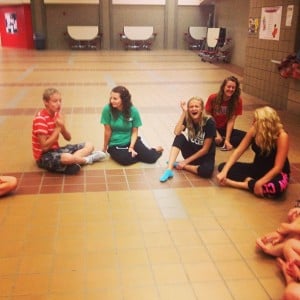
Source: A Childhood Game
Premise: Everyone sits in a circle. Someone volunteers to be the Starter. The Starter turns to the person on his/her left (his/her choice) and states, “Baby, I love you, but I just can’t make you smile” using any voice or facial express s/he desires. However, s/he may not touch the receiver. The person who receives this message must follow these guidelines: Eye contact is required. No sucking in cheeks or biting lips. S/he must not smile or laugh. If s/he smiles or laughs s/he is out. If the Starter gets that person out, s/he must repeat the process with the next person in the circle. If the Starter does not succeed in making the Receiver smile, then the Receiver must go through the process with the next person in the circle. As more and more people get OUT the circle must tighten and those who are out can become the audience. When it gets down to the “stone cold killahs” you can choose new bizarre phrases for them to try out on one another. (For example: “I baked you a muffin” or “I’m a cotton-headed ninny muggins” could work, but you know what will make your group giggle.) The last person standing is the winner and should be celebrated as such with joyous aplomb.
Note: I usually play the games with the students, but this is one from which I abstain, simply because it is too weird for kids to be telling me they love me, even in jest.
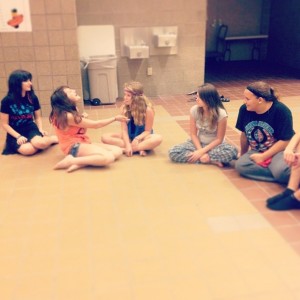
☆☆☆
Other Resources that I <3 <3 <3 (in no specific order)
- Games for Actors and Non-Actors by Augusto Boal (translated by Adrian Jackson)
- 3-Minute Motivators by Kathy Paterson
- Theater Games for the Classroom: A Teacher’s Handbook by Viola Spolin
- Children Tell Stories: Teaching and Using Storytelling in the Classroom by Martha Hamilton and Mitch Weiss


